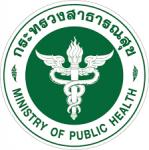Identifying opportunities to improve the effectiveness in rabies control in Thailand using geographical analysis
Comunicación oral en GeoVet 2019. Novel spatio-temporal approaches in the era of Big Data
8 de octubre de 2019
Kanankege KS., Wiratsudakul A., Prasarnphanich OO., Wongnak P., Yoopatthanawon C., Alvarez J., Errecaborde K. y Perez AM.
Despite immense efforts, rabies remains an endemic and neglected zoonotic disease in Asia and Africa, including Thailand. To evaluate and improve the effectiveness of control programs, it is imperative for policymakers and program managers alike to understand the spatiotemporal patterns of rabies spread in relation to underlying risk factors. Here, we generated rabies risk maps for Thailand using Bayesian spatial regression. Major risk factors associated with dog-mediated rabies were identified through published literature, and the relevant data were collected using publicly available and government institutional data sources. A linear regression model was used to investigate the association between the potential risk of rabies and available covariates at the sub-district level. To represent the potential risk of rabies at the sub-district level, both human and animal rabies cases and the number of dog bites were used to estimate the risk. In addition to the covariates, random effects pertaining to spatial dependence were included in the model using a conditional autoregressive model that accounted for the spatial autocorrelation with adjacent sub-districts. Preliminary results suggest that the number of Buddhist temples, human population density, and unowned dogs and cat population were significantly associated with the risk of rabies The number of open garbage dumps, which provide a site for food for the free-roaming animals, was not statistically significant (p<0.05). The fitted values were mapped and classified into five based on natural breaks. Sub-districts with classes three and above were considered to be at high risk (1412/7768; 18.18%). In subsequent steps, data available at both sub-district and provincial level, including the anti-rabies vaccination of dogs and the human post-exposure prophylaxis (PEP) usage, will be incorporated following a nested modeling approach. The risk maps may be useful to improve the current dissemination of dog vaccination, at the sub-district level, in Thailand
| University of Minnesota (UMM). | |
 | Faculty of Veterinary Science. Mahidol University. |
 | Ceneter for Disease Control and Prevention Collaboration. Thailand Ministry of Public Health-U.S. |
 | Centro de Vigilancia Sanitaria Veterinaria (VISAVET). Universidad Complutense (UCM). |
 | Departamento de Sanidad Animal. Facultad de Veterinaria. Universidad Complutense (UCM). |
Enlace relacionado:
Identifying opportunities to improve the effectiveness in rabies control in Thailand using geographical analysis
Enlace a GeoVet 2019. Novel spatio-temporal approaches in the era of Big Data

